Anna Thomas
Convolutional Sparse Coding based Channel Estimation for OTFS-SCMA in Uplink
Jul 21, 2021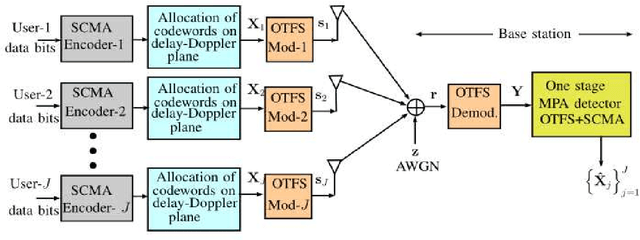
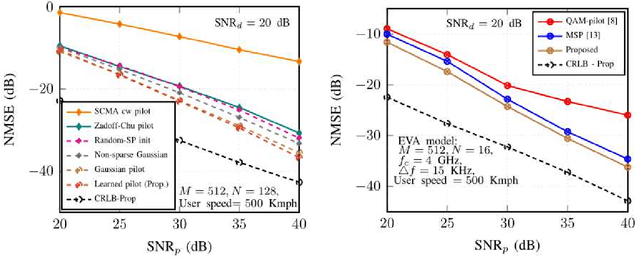
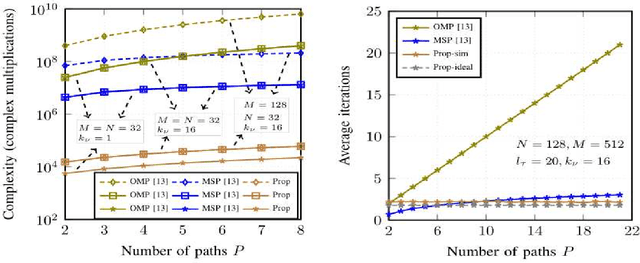
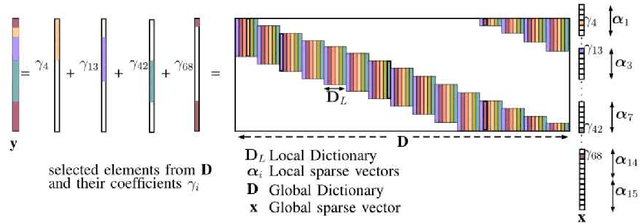
Abstract:Orthogonal time frequency space (OTFS) has emerged as the most sought-after modulation technique in a high mobility scenario. Sparse code multiple access (SCMA) is an attractive code-domain non-orthogonal multiple access (NOMA) technique. Recently a code-domain NOMA approach for OTFS, named OTFS-SCMA, is proposed. OTFS-SCMA is a promising framework that meets the demands of high mobility and massive connectivity. This paper presents a channel estimation technique based on the convolutional sparse coding (CSC) approach for OTFS-SCMA in the uplink. The channel estimation task is formulated as a CSC problem following a careful rearrangement of the OTFS input-output relation. We use an embedded pilot-aided sparse-pilot structure that enjoys the features of both OTFS and SCMA. The existing channel estimation techniques for OTFS in multi-user scenarios for uplink demand extremely high overhead for pilot and guard symbols, proportional to the number of users. The proposed method maintains a minimal overhead equivalent to a single user without compromising on the estimation error. The results show that the proposed channel estimation algorithm is very efficient in bit error rate (BER), normalized mean square error (NMSE), and spectral efficiency (SE).
Neurally-Guided Procedural Models: Amortized Inference for Procedural Graphics Programs using Neural Networks
Oct 13, 2016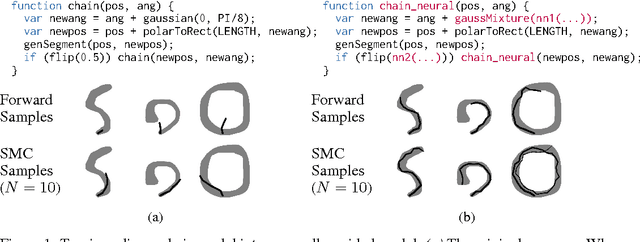
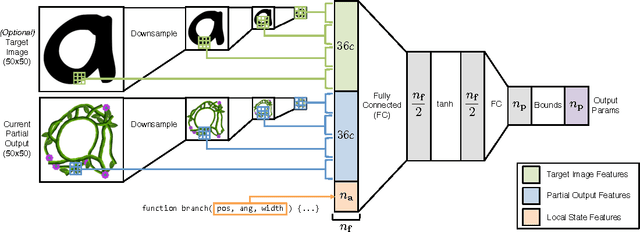


Abstract:Probabilistic inference algorithms such as Sequential Monte Carlo (SMC) provide powerful tools for constraining procedural models in computer graphics, but they require many samples to produce desirable results. In this paper, we show how to create procedural models which learn how to satisfy constraints. We augment procedural models with neural networks which control how the model makes random choices based on the output it has generated thus far. We call such models neurally-guided procedural models. As a pre-computation, we train these models to maximize the likelihood of example outputs generated via SMC. They are then used as efficient SMC importance samplers, generating high-quality results with very few samples. We evaluate our method on L-system-like models with image-based constraints. Given a desired quality threshold, neurally-guided models can generate satisfactory results up to 10x faster than unguided models.
 Add to Chrome
Add to Chrome Add to Firefox
Add to Firefox Add to Edge
Add to Edge